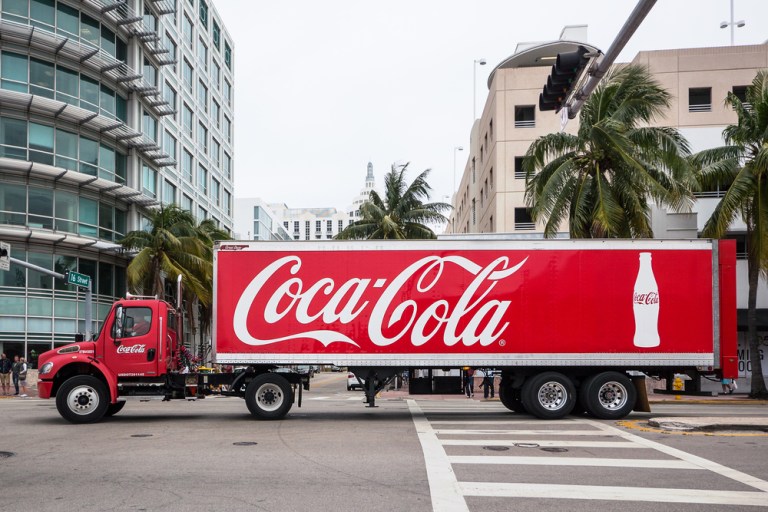Coca-Cola Adjusts for Cost-Conscious Consumers as Shoppers Trade Down

As consumers continue to seek more affordable options amid inflation, Coca-Cola is shifting its product strategy toward cost-cutting shoppers.
On a call with analysts on Wednesday (July 26) discussing The Coca-Cola Company’s second quarter FY2023 financial results, CEO James Quincey explained that, as consumers shift their spending behavior in response to economic pressures, the company is adjusting to offer more budget-friendly options.
“Premiumization remains an opportunity, but we need to keep an anchor and continue to evolve and adapt our strategies on affordability, whether that be refillables, whether it be affordable small packs or affordable future consumption packs — that has become something that is a tested strategy in inflationary environments,” Quincey said.
He noted that the company is harnessing past learnings from Latin American countries in periods of inflation and applying them to European markets and the United States.
Certainly, U.S. consumers are feeling the weight of years of inflation. Consumer Price Index (CPI) data from the Bureau of Labor Statistics (BLS) reveal that, in June, grocery prices were up 4.7% year over year, following a 12.2% rise last year, amounting to a 17.5% increase relative to 2021.
“Consumers are increasingly cost conscious,” Quincey noted. “They’re looking for value and stocking up on items on sale.”
Consumers are indeed adjusting their spending, making changes such as cutting out unnecessary purchases. Research from PYMNTS’ May report, “Consumer Inflation Sentiment Report: Consumers Cut Back by Trading Down,” which drew from a spring survey of more than 2,000 U.S. consumers, finds that 57% of shoppers have cut down on nonessential grocery spending.
This trend could spell bad news for a company such as Coca-Cola. After all, despite what super fans may say, people typically do not need soft drinks to survive. Yet by offering lower-cost items, the beverage giant can keep many belt-tightening consumers engaged.
Additionally, Quincy noted that the company faces a threat from private-label brands and other lower-priced competitors in some categories, but not as much in others. Perhaps unsurprisingly, given the brand’s strength, the company’s flagship cola is not seeing this effect as much as less iconic products are.
“Private label switching is principally a feature firstly in Europe, and then to some extent also in the U.S. … It’s, in our view, highly related to the strength of the brands in any specific category,” Quincey explained. “So, we see it more, in terms of beverages, happening in water and juices rather than soft drinks, and certainly less when you get to colas.”
Indeed, consumers are looking for less expensive grocery options. The same Consumer Inflation Sentiment report revealed that 47% of shoppers have switched to sellers offering better grocery prices.
One of the effects that inflation has had on consumers’ food and beverage routines is prompting many diners to consume more of their meals at home. To capture this shift, Coca-Cola has been looking to drive beverage consumption as a complement to home-cooked meals with its “A Recipe for Magic” campaign.
“During the quarter, we gained volume and value share by linking Coca-Cola to consumption occasions and engaging consumers through local experiences. … The Coke and Meals campaign also allows Coca-Cola to strengthen its local relevance,” Quincey said. “For instance, in the Away-From-Home channel in Italy, Coca-Cola has grown incidence with Pizza, the number one consumed meal.”